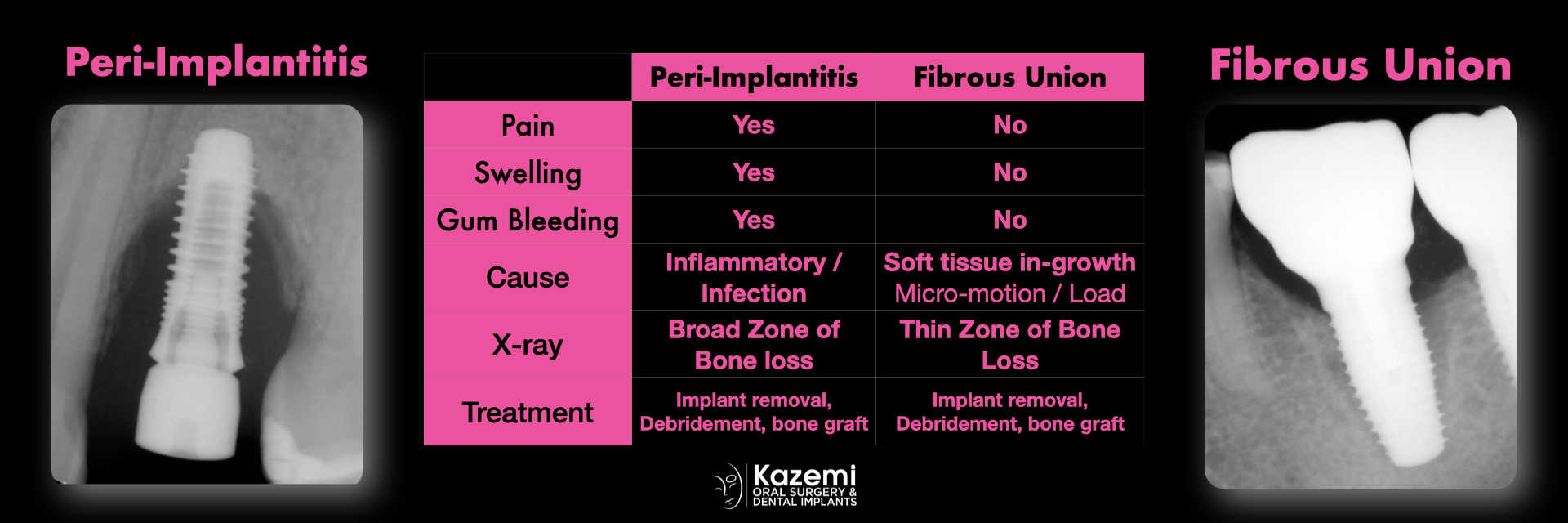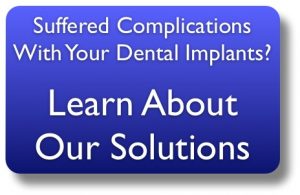Dental implants heal to the surrounding bone through a process known as osseointegration. Complete loss of contact between the bone and the implant, although rare, will result in dental implant loosening. Two conditions can cause loss of implant-bone integration and loosening of the implant. Let’s take a look at each one and how to differentiate:
The first cause of bone loss is an inflammatory condition known as peri-implantitis. It starts as peri-implant mucositis (early inflammation). If undetected or untreated, it will ultimately lead to peri-implantitis and bone loss. Patients often experience pain, swelling, and bleeding gums with gradual and continued loss of bone. At its most advanced stage, peri-implantitis results in complete loss of bone and hence a loose dental implant. On an X-ray, the implant appears with a broad zone of radiolucency (dark area) where bone loss has occurred. The risk factors for this condition include smoking, poor implant placement, inadequate bone or gum tissue, and poor home and professional care.
The second cause of dental implant mobility is the development of a fibrous union between the implant and the bone. In this case, the bone gradually shrinks around the implant, and epithelium cells migrate between the implant and the bone, forming a soft tissue layer disrupting the osseointegration. Patients generally have no or minor discomfort and no swelling or signs of inflammation. On an X-ray, the implant presents a thin zone of radiolucency (dark area) where the soft tissue in-growth has occurred. The risk factor for this condition is early micro-motion on the implant during the healing phase or possibly overload due to occlusal / bite factors.
While presentation and symptoms are quite different, their treatments are the same. The first step is the removal of the dental implant, which is usually not difficult. The second step is the excision of the surrounding inflammatory tissues (in case of peri-implantitis) or soft tissue in-growth (in case of a fibrous union). Then the sites are cleaned and irrigated. Finally, the site is grafted with bone to restore the defect. Platelet-rich fibrin is an excellent adjunct during the grafting procedure to accelerate the healing process. A new dental implant can be placed in 4-6 months.

Dr. H. Ryan Kazemi is a board-certified oral and maxilloafacial surgeon in Bethesda, MD